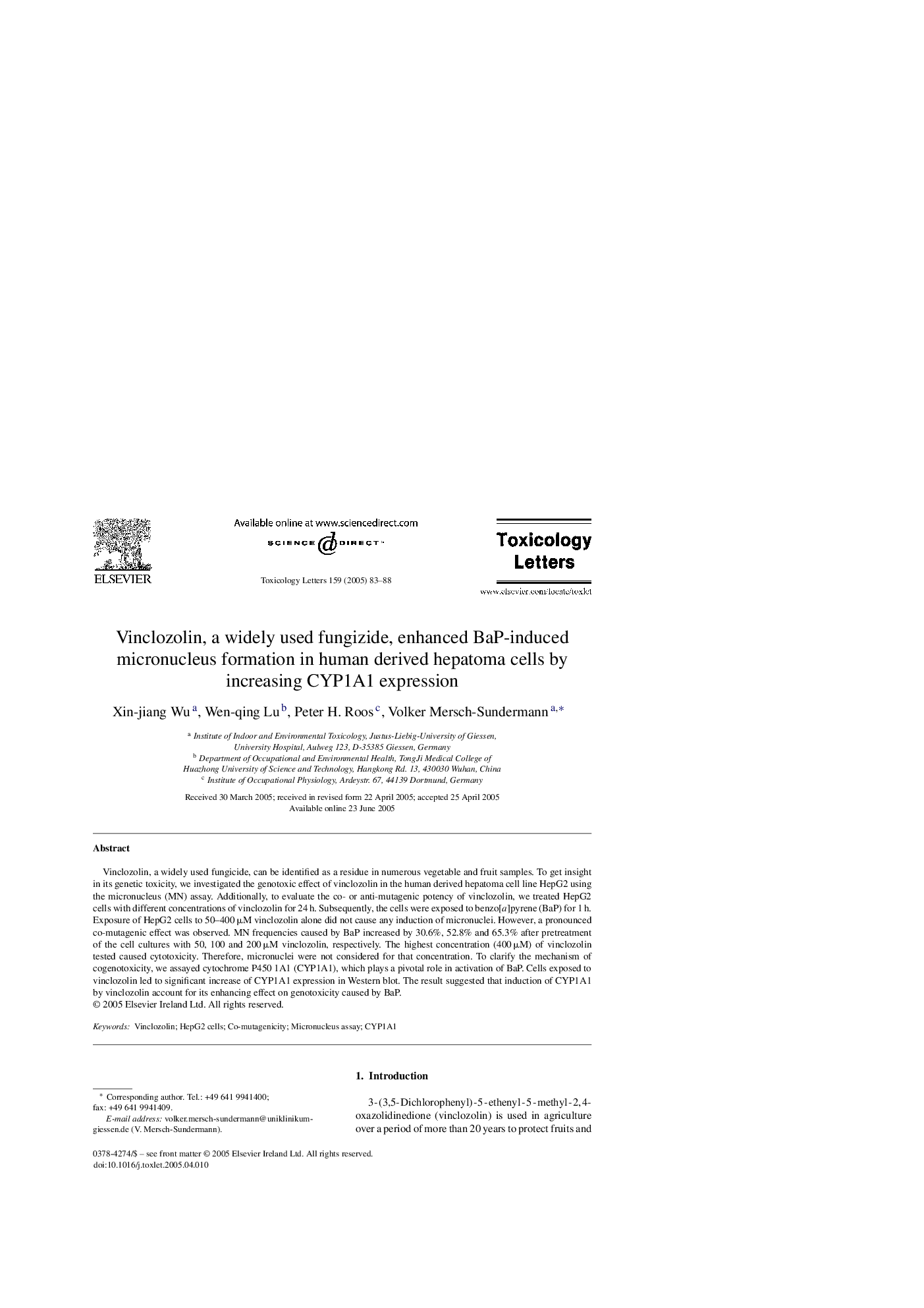| Article ID | Journal | Published Year | Pages | File Type |
|---|---|---|---|---|
| 9037427 | Toxicology Letters | 2005 | 6 Pages |
Abstract
Vinclozolin, a widely used fungicide, can be identified as a residue in numerous vegetable and fruit samples. To get insight in its genetic toxicity, we investigated the genotoxic effect of vinclozolin in the human derived hepatoma cell line HepG2 using the micronucleus (MN) assay. Additionally, to evaluate the co- or anti-mutagenic potency of vinclozolin, we treated HepG2 cells with different concentrations of vinclozolin for 24 h. Subsequently, the cells were exposed to benzo[a]pyrene (BaP) for 1 h. Exposure of HepG2 cells to 50-400 μM vinclozolin alone did not cause any induction of micronuclei. However, a pronounced co-mutagenic effect was observed. MN frequencies caused by BaP increased by 30.6%, 52.8% and 65.3% after pretreatment of the cell cultures with 50, 100 and 200 μM vinclozolin, respectively. The highest concentration (400 μM) of vinclozolin tested caused cytotoxicity. Therefore, micronuclei were not considered for that concentration. To clarify the mechanism of cogenotoxicity, we assayed cytochrome P450 1A1 (CYP1A1), which plays a pivotal role in activation of BaP. Cells exposed to vinclozolin led to significant increase of CYP1A1 expression in Western blot. The result suggested that induction of CYP1A1 by vinclozolin account for its enhancing effect on genotoxicity caused by BaP.
Related Topics
Life Sciences
Environmental Science
Health, Toxicology and Mutagenesis
Authors
Xin-jiang Wu, Wen-qing Lu, Peter H. Roos, Volker Mersch-Sundermann,
